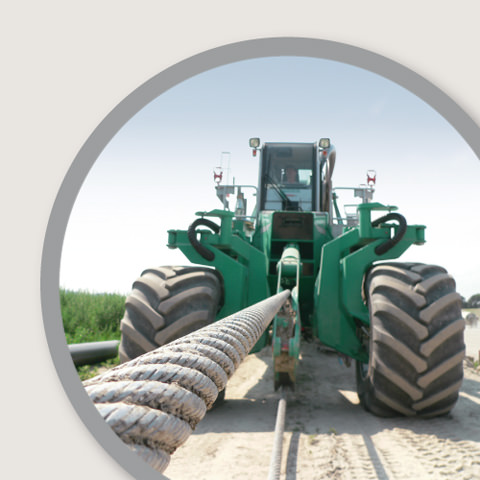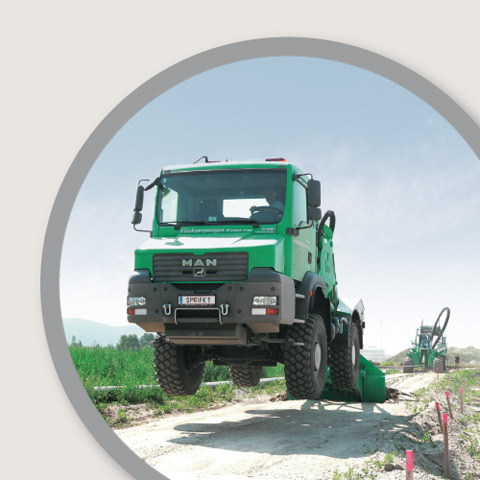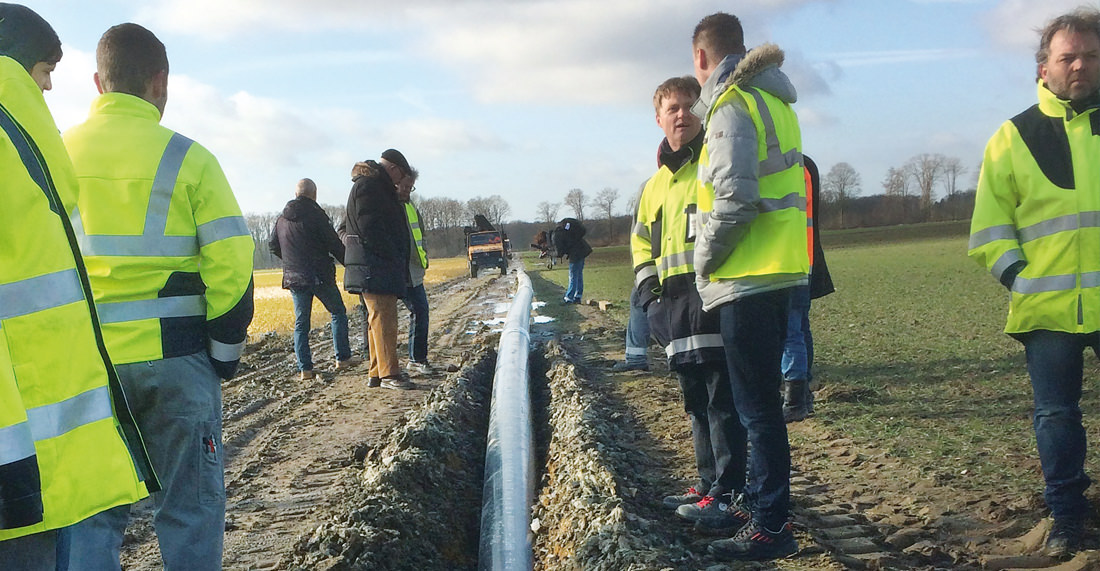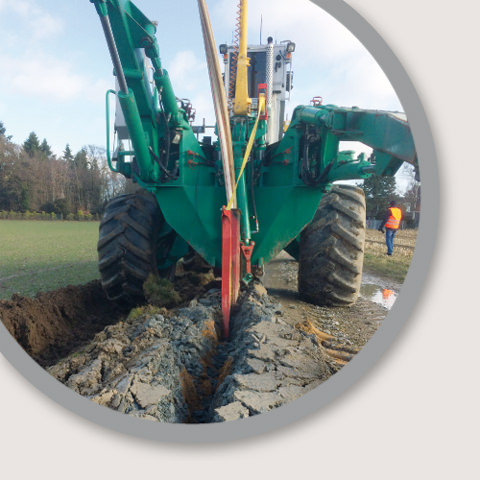Laying a high-pressure gas pipeline using the plowing technique
Conserving resources, cutting costs
A high-pressure gas pipeline, which conventionally requires time-consuming laying in two phases, has been installed in just four working days by using the plowing technique. This method is easy not only on the environment but also on the purse of NEW Netz GmbH.
NEW Netz GmbH operates the supply grids for electricity, natural gas and drinking water in Mönchengladbach and environs on the Lower Rhine. The grid for gas covers a surface area of 955 km² and supplies a population of some 645,000.
In February 2015, it became necessary to re-lay an existing high-pressure gas pipeline in Mönchengladbach between the districts of Hehn and Herdt. Since the pipeline route crosses open terrain without any major slope, NEW Netz became the first energy service provider in the area to choose the plowing technique for laying the new pipeline.
At the start of planning, some 1,700 m of the total distance of 2,400 m was identified as ideal for the technique.
With the plowing technique, we’ve set a new pipe-laying record.Norbert Esser, Site Manager, NEW Netz
Steel pipes with a two-layer coating of PE and PA
Salzgitter Mannesmann Line Pipe supplied HFI-welded steel pipes with a diameter of 273 mm and a wall thickness of 5 mm in unit lengths of 12 m. The pipeline in steel grade L245N was dimensioned for a maximum permissible operating pressure of 16 bar and given a 2.7 mm two-layer polythene coating with an additional 2 mm polyamide wear protection layer. The field coating of the weld area was also adapted to the pulling process and the polyamide coating.
Laying using the plowing technique
The pipes were laid out along the 1.700 m long route and welded into three strings on site. The joint areas were shot-blasted and subsequently field-coated by with HT80 by Kebulin.
Laying with a special-purpose Unimog vehicle and the pipe-laying plow was carried out by the Austrian company IFK, which has amassed over 20 years of experience with this method. The Unimog winched the plow which, in turn, pulled the welded pipe string at a laying depth of up to 2.5 m with millimeter precision along the planned route and at the laying level. In the same cycle, two empty pipes for glass fiber cables were additionally laid in the furrow drawn by the plow. After plowing and detachment from the plowshare, the ends of the strings were welded to the rest of the pipeline and subjected to extensive testing.

The pipe-laying plow with a steel rope winch pulled by a special-purpose Unimog vehicle.
Pipe-laying record for NEW
NEW Netz Site Manager Norbert Esser: "Normally, the project would have had to be carried out in two phases at the turns of the year 2014/15 and 2015/16. With the plowing technique, we’ve set a new pipe-laying record, completing the project in just four working days." Marion Hauschke, Director of Execution Planning and Construction at NEW Netz, is also delighted with the project. "As we didn’t need any trucks or diggers, damage to the land that had to be remedied afterwards was reduced to a minimum." Esser’s final comment: "After plowing, it almost looked as if we hadn’t been there at all."

The Unimog vehicle is capable of applying a tensile force of up to 250 t.
Plowing technique – benefits and potential
With over 20 years of experience of this special plowing technique IFK in Salzburg, Austria, has been and is considered Europe’s technology leader in this sector.
Using the plowing technique, pipes with diameters of DN 40 to DN 600 can be laid down to a depth of 2.5 m in soil classes 2 to 5. Plowing through water bodies at depths of up to 1.5 m is also possible. In addition, IFK produces extensive documentation containing all the pipe-laying parameters.
Advantages at a glance
- 20 times faster than a digger
- Up to 40 % cheaper than conventional pipe-laying
- Easy on the environment
- Reduction in trenches, excavated soil, soil transportation and damage to the land
- Very little disturbance of local residents.

